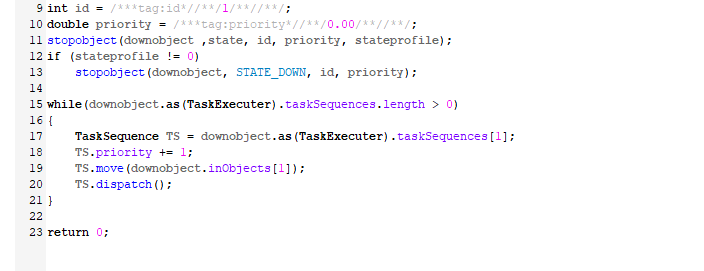I have tried to point the operator back to the dispatcher but it just go in loop between processor.
What is the proper way to set proper processor work hand off from shift 1 to shift 2 and then shift 2 back to shift 1?
I have tried to point the operator back to the dispatcher but it just go in loop between processor.
What is the proper way to set proper processor work hand off from shift 1 to shift 2 and then shift 2 back to shift 1?
Hi @Howard, was Felix Möhlmann's answer helpful? If so, please click the "Accept" button at the bottom of their answer. Or if you still have questions, add a comment and we'll continue the conversation.
If we haven't heard back from you within 3 business days we'll auto-accept an answer, but you can always comment back to reopen your question.
Passing the task sequences back to the dispatcher is a good approach. However, a task sequence that is passed back to the dispatcher will be added to the end of its task sequence queue. Currently all sequences have the same priority, so they get passed out in a 'Round Robin' fashion. Since the operators are moving at only 2ft/hour (which I find quite odd, are these values really correct?), they always never reach the processor in time to continue the task sequence.
If you instead pass the task sequence back in the down function of the time tables, you can at the same time increase its priority, so it will be dispatched ahead of other pending tasks that have not been started yet.
It might also be better to split of the breaks into a separate time table, so they do not cause the task sequence to be returned. In the attached model I removed the breaks from the shift time tables for now, to get a clearer view of how the logic operates.
Since my model is using unit of mile and hours so the transporters were moving super fast so I just reduced the max speed, acceleration, and deceleration to as slow as possible. Now I set it Max Speed = 5, Acceleration = 10, Deceleration = 10 so it is more similar to reality. Would this speed work?
How can I pass the task sequence back in the down function of the time table? I am not sure how to do that.

I have combined all the operator's breaks into theTimeTable_Down_AllShift. Would it be possible to put all operators from different shifts into the same down time table?
globaltabledemohr-globallist-20240624-fm_V0.fsm
The base length unit in your model are feet and the item unit hours. Hence all speeds are currently given as feet/hour. Which is why I thought they were all very low.
Before you ask, no you can not change the base unit in an existing model. But you can of course alter the speed/acceleration units in the operator's properties.
I already added code to move the task sequences back to the dispatcher in the down functions of the shift plans (line 15-21).

You can have all operators in a single time table for the breaks, if the down state is the same as the one used by the shift plans, because then it won't make a difference if an already inactive operator is stopped again.
12 People are following this question.
FlexSim can help you understand and improve any system or process. Transform your existing data into accurate predictions.
FlexSim is a fully 3D simulation software environment. FlexSim can be used to simulate any process in any industry.
FlexSim®, FlexSim Healthcare™, Problem Solved.®, the FlexSim logo, the FlexSim X-mark, and the FlexSim Healthcare logo with stylized Caduceus mark are trademarks of FlexSim Software Products, Inc. All rights reserved.
Privacy | Do not sell or share my personal information | Cookie preferences | Report noncompliance | Terms of use | Legal | © Autodesk Inc. All rights reserved